Revealed: 2021 Volkswagen ID.4

It’s been talked about and teased, and now it’s finally here. Volkswagen took the wraps off the 2021 ID.4 electric vehicle in one of the now-ubiquitous live-streamed reveals.
You can even buy yours today if you like what you see. Reservations are open.
The sticker for the Pro trim level is $39,995 (unclear if that includes D and D) before the $7,500 federal tax credit for EVs. VW is touting a 250-mile range for the 1st Edition trim.
The compact crossover will launch first with a 201-horsepower, 82 kWh setup, and rear-wheel drive. An all-wheel-drive configuration with 302 horsepower and 82 kWh will come later.
Buyers will get three years of fast charging via Electrify America at no cost. The ID.4 will be built in Chattanooga, Tennessee, starting in 2022, and the base price will eventually be around $35,000.
“The ID.4 was engineered, loaded and priced to win the hearts of SUV owners who are simply ready to go electric—and fall in love with Volkswagen again,” said Scott Keogh, CEO, Volkswagen Group of America, in a statement. “It drives like a GTI, it has the packaging of a Tiguan and the purpose of the Beetle. All the best things about VW in one package.”
The ID.4 uses VW’s modular electric drive architecture (MEB) platform, and the electric motor is located at the rear.
The battery pack has 288 cells in 12 modules, and it’s placed in the underbody to keep the center of gravity low. It’s set in an aluminum housing that’s bolted to the frame.
The rear motor is AC permanent-synchronous and in addition to the 201 horsepower it puts out 228 lb-ft of torque.
While the motor is AC, both AC and DC fast chargers will work. An 11 kW onboard charger helps the ID.4 pickup 33 miles worth of charge in an hour, and full charge will take about seven and a half hours on a level 2 charger. Find a DC fast charger with 125 kW, and you can get from about five percent to about percent charge in around 38 minutes.
The chassis and body are steel, and the front suspension is a strut-type with lower control arms. It also has coil springs, telescopic dampers, and an anti-roll bar. At rear is a multi-link rear axle with coil springs as well as telescopic dampers and an anti-roll bar. VW is touting a turning radius of 33.5 feet and 3.5 turns lock to lock for the steering.
One eyebrow-raising spec – while the ID.4 uses front disc brakes, the rears have drums. Not many modern vehicles using drums these days. VW’s press materials claim that because EVs use regenerative braking, drums are more effective after long periods of not being used than discs are.
The styling is swoopy, and there’s no grille, because, hey, an EV doesn’t need one. There are LED lights up front, and buyers who opt for the Statement package get a lit-up VW logo and a front light bar. There’s a spoiler at the rear, and VW is claiming a drag coefficient of 0.28.
The ID.4 gives up more than four inches to the Tiguan, at 180.5 inches long. Its wheelbase is 108.9 inches, height 64.4 inches, and width 72.9 inches.
There will be six colors available, and the roof will be body color. Wheels will be 19-inch aluminum alloys. A black roof, adaptive front lighting, and 20-inch wheels are available.
Inside, the ID.4 offers almost 100 cubic feet of passenger volume, and cargo volume is 30.3 cubic feet with the rear seats up and 64.2 with them folded.
Gauges are digital, and voice control is a big part of the picture. There’s no shifter, just a rocker switch. The infotainment screen is a 10-incher, upgradable to 12. Gesture control will be available. An interior light strip is used to alert the driver that certain functions are active.
Available features include rain-sensing wipers, dual-zone climate control, auto-dimming rearview mirror, keyless access, heated steering wheel (standard), satellite radio, power tailgate, adjustable trunk floor, Apple CarPlay, and in-car Wi-Fi.
Driver-assist tech includes forward-collision warning, autonomous emergency braking with pedestrian monitoring, blind-spot monitor, rear cross-traffic alert, adaptive cruise control, lane-keeping assist, travel assist, emergency assist, road-sign display, park-distance control, and high-beam assist.
The ID.4 Pro will start at $39,995, as mentioned, before the $7,500 credit from the feds. An AWD Pro will ring the register at $43,695, and a heated windshield and a tow hitch are added along with the more powerful motor. The available Statement Package runs $4,500 and the Gradient $1,500. You must buy Statement to get Gradient.
The limited-edition ID.4 1st Edition will start at $43,995. It will have the Pro’s standard features, plus the Statement and Gradient packages, but no light-up logo. There are play and pause icons on the pedals, unique badging and trim, and unique interior finishings. Yes, you do get the tow hitch.
A $35K model appears planned for the near future.
VW will be selling this car in all 50 states and via all of its dealer network. You can plunk down a fully refundable $100 deposit now, and when production starts, you’ll be asked to put down another $400 deposit, also refundable, if you’re still on board.
[Images: Volkswagen]

Tim Healey grew up around the auto-parts business and has always had a love for cars — his parents joke his first word was “‘Vette”. Despite this, he wanted to pursue a career in sports writing but he ended up falling semi-accidentally into the automotive-journalism industry, first at Consumer Guide Automotive and later at Web2Carz.com. He also worked as an industry analyst at Mintel Group and freelanced for About.com, CarFax, Vehix.com, High Gear Media, Torque News, FutureCar.com, Cars.com, among others, and of course Vertical Scope sites such as AutoGuide.com, Off-Road.com, and HybridCars.com. He’s an urbanite and as such, doesn’t need a daily driver, but if he had one, it would be compact, sporty, and have a manual transmission.
More by Tim Healey
Latest Car Reviews
Read moreLatest Product Reviews
Read moreRecent Comments
- W Conrad I'm not afraid of them, but they aren't needed for everyone or everywhere. Long haul and highway driving sure, but in the city, nope.
- Jalop1991 In a manner similar to PHEV being the correct answer, I declare RPVs to be the correct answer here.We're doing it with certain aircraft; why not with cars on the ground, using hardware and tools like Telsa's "FSD" or GM's "SuperCruise" as the base?Take the local Uber driver out of the car, and put him in a professional centralized environment from where he drives me around. The system and the individual car can have awareness as well as gates, but he's responsible for the driving.Put the tech into my car, and let me buy it as needed. I need someone else to drive me home; hit the button and voila, I've hired a driver for the moment. I don't want to drive 11 hours to my vacation spot; hire the remote pilot for that. When I get there, I have my car and he's still at his normal location, piloting cars for other people.The system would allow for driver rest period, like what's required for truckers, so I might end up with multiple people driving me to the coast. I don't care. And they don't have to be physically with me, therefore they can be way cheaper.Charge taxi-type per-mile rates. For long drives, offer per-trip rates. Offer subscriptions, including miles/hours. Whatever.(And for grins, dress the remote pilots all as Johnnie.)Start this out with big rigs. Take the trucker away from the long haul driving, and let him be there for emergencies and the short haul parts of the trip.And in a manner similar to PHEVs being discredited, I fully expect to be razzed for this brilliant idea (not unlike how Alan Kay wasn't recognized until many many years later for his Dynabook vision).
- B-BodyBuick84 Not afraid of AV's as I highly doubt they will ever be %100 viable for our roads. Stop-and-go downtown city or rush hour highway traffic? I can see that, but otherwise there's simply too many variables. Bad weather conditions, faded road lines or markings, reflective surfaces with glare, etc. There's also the issue of cultural norms. About a decade ago there was actually an online test called 'The Morality Machine' one could do online where you were in control of an AV and choose what action to take when a crash was inevitable. I think something like 2.5 million people across the world participated? For example, do you hit and most likely kill the elderly couple strolling across the crosswalk or crash the vehicle into a cement barrier and almost certainly cause the death of the vehicle occupants? What if it's a parent and child? In N. America 98% of people choose to hit the elderly couple and save themselves while in Asia, the exact opposite happened where 98% choose to hit the parent and child. Why? Cultural differences. Asia puts a lot of emphasis on respecting their elderly while N. America has a culture of 'save/ protect the children'. Are these AV's going to respect that culture? Is a VW Jetta or Buick Envision AV going to have different programming depending on whether it's sold in Canada or Taiwan? how's that going to effect legislation and legal battles when a crash inevitibly does happen? These are the true barriers to mass AV adoption, and in the 10 years since that test came out, there has been zero answers or progress on this matter. So no, I'm not afraid of AV's simply because with the exception of a few specific situations, most avenues are going to prove to be a dead-end for automakers.
- Mike Bradley Autonomous cars were developed in Silicon Valley. For new products there, the standard business plan is to put a barely-functioning product on the market right away and wait for the early-adopter customers to find the flaws. That's exactly what's happened. Detroit's plan is pretty much the opposite, but Detroit isn't developing this product. That's why dealers, for instance, haven't been trained in the cars.
- Dartman https://apnews.com/article/artificial-intelligence-fighter-jets-air-force-6a1100c96a73ca9b7f41cbd6a2753fdaAutonomous/Ai is here now. The question is implementation and acceptance.





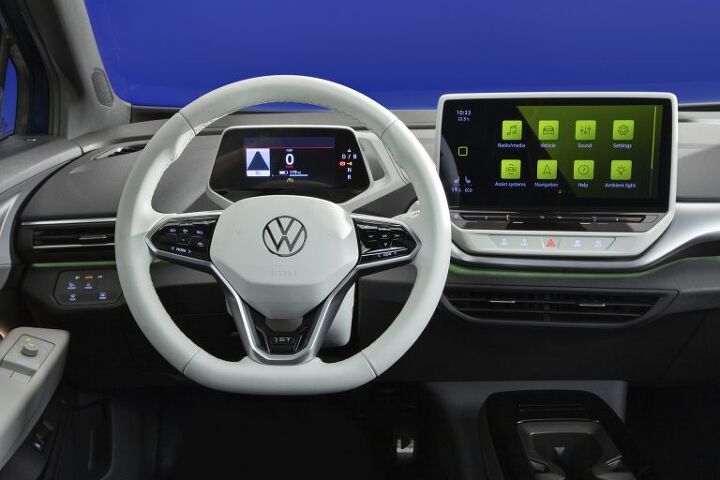


















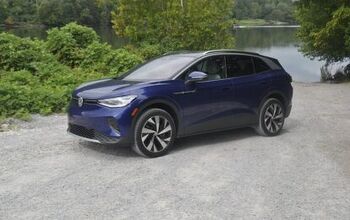
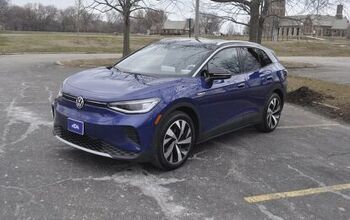
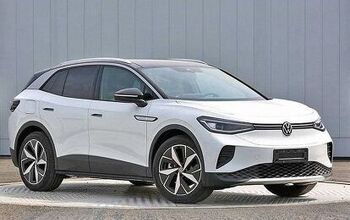

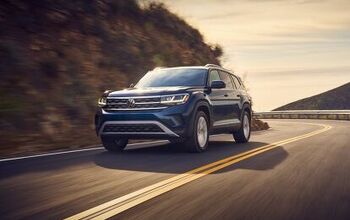










Comments
Join the conversation
down on skid row
They lost me at the photo of a white steering wheel. Will they include a pair of white gloves so it doesn't get dirty?